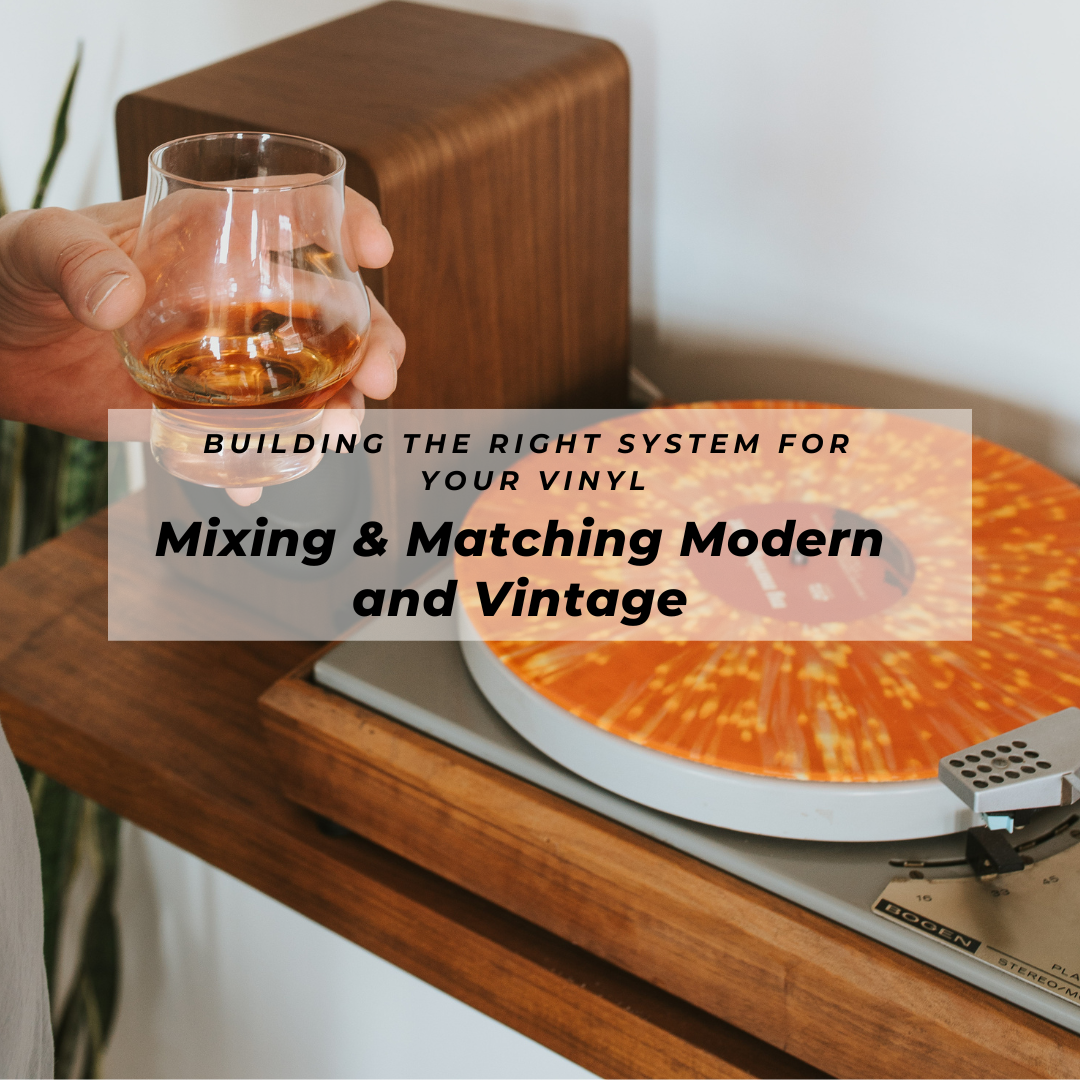The Right Stereo for Your Vinyl: Modern, Minimal Systems
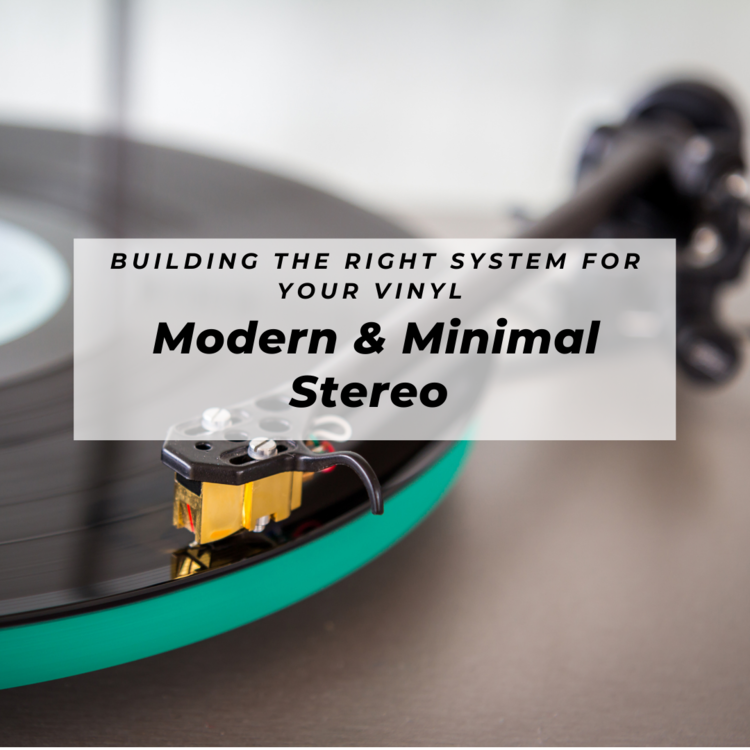
In our introduction to stereo systems, we laid out three main ways to approach building your first stereo system: modern, vintage, and hybrid. Vintage systems, as we discussed, are great for those who want unique pieces and who are willing to hunt for a bargain. But they aren’t for everyone. They are bulky. It can be hard to judge their condition. When they break, they can be difficult or expensive to fix. And maybe you just don’t like the style.
If the downsides of vintage outweigh the charm, consider a modern system. Modern systems are easier to buy. You can find them online or at your local stereo shop. They are easier to maintain. Manufacturer parts and support are readily available and are often covered by warranty. Modern systems look, well, modern and can come in some convenient new form factors that reduce footprint and make set-up easier. And modern systems often support features like wireless connectivity that simply weren’t around when your dad was air-brushing his conversion van.
The Modern Aesthetic
One upside of modern vs vintage equipment is that today’s manufacturers are offering more design choices than ever before. Audio-Technica and Music Hall, among others, have product lines with a classic look that is right at home with the green glass and aircraft aluminum of 70s hi-fi. But there are also new designs that are sleeker and more minimalist than anything available back then. If you prefer that minimalist style, you almost certainly want to opt for modern equipment. U-Turn, Pro-Ject, and Music Hall offer minimalist turntables in a choice of natural wood or bold solid colors.
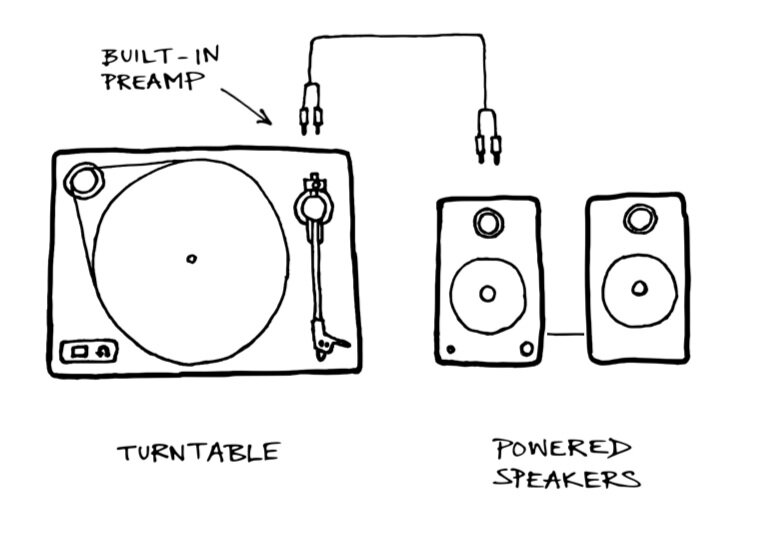
A minimal system, as diagramed by U-Turn , one of our favorite turntable manufacturers.
New Form Factors: The Minimal Option
Modern equipment can allow you to streamline your system dramatically. Many manufacturers now offer products that bundle different components together. These range from truly all-in-one systems like the Model-One from Andover Audio (where the turntable, preamp, amplifier, and speakers are all built into one box) to powered speakers (which combine the speaker and the amplifier) from companies like Kanto, Jamo, and Audioengine. Some powered speakers include the phono preamp as well. Many modern turntables also include a built-in phono preamp. The upshot is that you can create a full stereo system with one to three pieces of hardware. What’s more, some of these systems allow you to eliminate connecting wires using Bluetooth and WiFi (though you will still have to deal with power cables).

This Nickleback record still sounds horrible…
Do minimal systems sound worse?
Some sources will give you the impression that when you bundle components together, you end up with worse components and bad sound. According to the experts we talked to, that’s wrong. Or at least misleading.
“Some blogs make it sound like [powered speakers] are compromised because they combine components, and they aren’t,” says Thom, a Sales Representative with Fred’s Sound of Music in Portland, Oregon.
“If you go with a minimal system…, you’re not necessarily trading off sound quality, because what [product designers] can do is tune the amplifiers to the speaker,” says Michael Buratto, Senior Product Manager at Klipsch. “If you’re designing passive speakers, you are trying to create a catch-all product that sounds good with any possible receiver…. [A minimal system] can actually increase performance.”
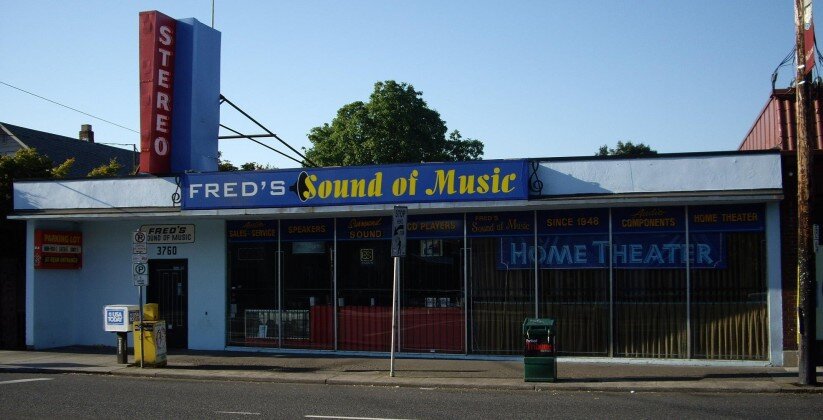
Local stereo shops like Fred’s Sound of Music in Portland, OR can help you find a stereo system that meets your needs.
Objectively, the cases where integration of components might lead to “worse” sound are on the very low end and the very high end. On the low end, all-in-one suitcase record players have very cheap components, but those cheap components also enable you to get a functioning record player for $50. On the high end, for people spending thousands of dollars on systems, part of the value is the ability to customize, tune, and tweek the sound. That fine tuning is best accomplished with discrete components.
Philosophically, our experts questioned the idea of an ‘inferior’ system. “The only person that has to like the sound of your system is you,” says Andrew Robinson, repeating the catch-phrase he uses to close the videos on his popular YouTube channel. Robinson is known for such heretical statements as “the best turntable you can buy is the one you can afford.” Which is really just to say that if you like the sound of the system and it meets your other needs, everything else is irrelevant.

A minimal vinyl stereo complete with Deep Cut Cube Shelves.
So, do I want a minimal system?
That depends on you. You can get great sound out of a minimal system or a traditional system comprised of separates. Aesthetically, if you like clean lines and as little clutter as possible, it is hard to argue against a minimal system. Minimal systems are also smaller. “We find that lots of our customers opt for simplified powered speaker setups because it’s easier to fit into your home - especially if you are living in an apartment or have limited floorspace,” notes Ben Carter, Co-Founder of U-Turn Audio.
And, with fewer pieces, they are easier to set up. “Our thought process was to give someone a simple, easy route to get into vinyl, without having to go through the education process that it takes to properly balance out multiple components,” says Bob Hazelwood, Director of Engineering and Product Development at Andover Audio, speaking about their Spinbase product.
The main disadvantage is that they aren’t as “expandable,” in the words of Thom at Fred’s Sound of Music. That means it is harder to add or upgrade elements to a minimal system (like adding a CD player, or additional speakers, etc).
Our experts recommend you start by thinking about how you listen to music now. “If you say ‘mostly in my car,’ or ‘mostly on my phone,’ ... then you are a perfect candidate for soundbar or a set of powered speakers,” says Robinson. Most powered speakers can pair with your phone via Bluetooth, so you can use them for streaming when you aren’t spinning vinyl.
If your parents had a big hi-fi system you want to recreate, or if you have a huge space to fill, think about a traditional system of separates. Traditional systems can usually accommodate more inputs. Most powered speakers are bookshelf size. If you want the power of floor speakers, you will probably need to get a traditional system.
Also think about your space and personal taste. For those with small spaces or who just prefer a small footprint, minimal systems are hard to beat.
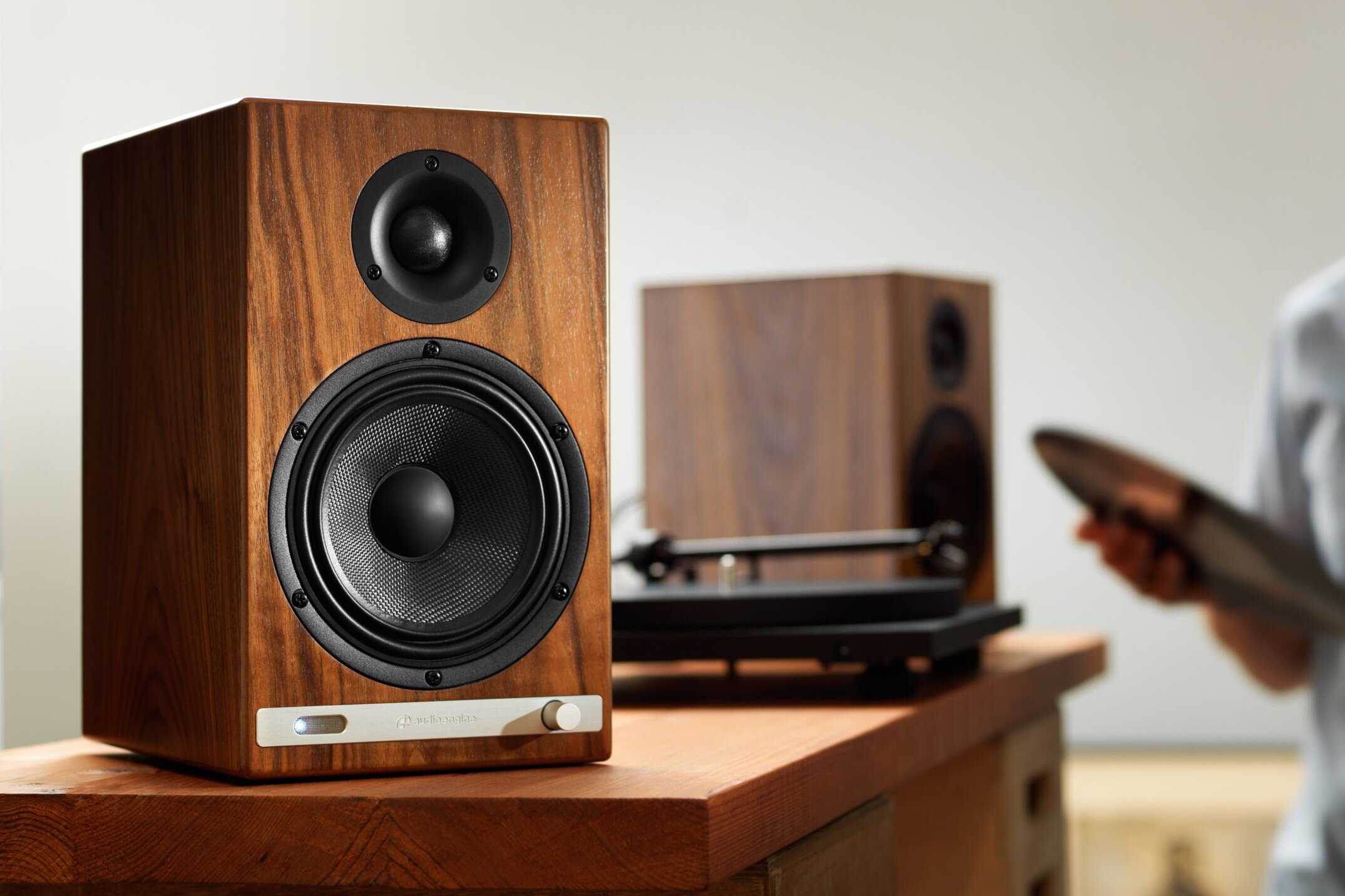
Audioengine offers several wireless powered speakers for ultra-minimal vinyl stereos.
New Form Factors: The Wireless Option
Some modern stereo equipment also gives you the option of eliminating most wires from your system. That allows you more flexibility with placement of components. You can put your turntable across the room from your speakers, for instance, without having to run wires along the floor or the baseboards. It also cuts down clutter.
When you are talking wireless, there are two types of connections to think about: the connection between the turntable and the amplifier/speaker, and the connection between the speakers themselves. The connection type is significant because the two types tend to use different wireless technologies, and this can have a big impact on the sound. Wireless speaker systems almost always use WiFi or another high-bandwidth wireless protocol to connect. Turntables almost always use Bluetooth, which is much lower-bandwidth than WiFi, because it is designed to use much less power.
Wireless Turntable Connections: Some turntables, even relatively inexpensive ones like the Audio-Technica AT-LP60XBT (which retails for about $150), now have Bluetooth capability, which allows you to connect them to any Bluetooth-enabled speaker or amplifier. Many, if not most, powered speakers on the market today are Bluetooth compatible, making the connection easy. Even If you have a traditional receiver that doesn’t have Bluetooth capability, though, you can connect a Bluetooth adapter that will enable transmission. Voila, you can put your turntable on your desk and your speakers next to your tv.
Wireless Speaker Connections: Even if you connect your turntable to the speaker/amplifier wirelessly, traditional stereo separate systems still require wired connections between the amplifier and the speakers. Most powered speakers also have a wire running from one speaker to the other. Sonos, Blusound, and other wireless speaker systems eliminate these speaker wires. Voila, you can put your speakers at opposite corners of the room without having to run a speaker wire across the floor or along the baseboards.
Will wireless destroy the sound of my vinyl?
Part of the appeal of vinyl is its unique sound, and part of that unique sound is that vinyl is an analog technology. Broadcasting wirelessly often requires translating the analog signal to a digital one. So do you destroy the analog sound if you use wireless?
Let’s break this question into two parts: a) Does converting the analog signal to digital destroy the sound of vinyl? and b) Does broadcasting the signal wirelessly destroy the sound of vinyl.
The short answer to a), according to our experts, is, no. Converting an analog signal to digital is not going to change the sound of your turntable in any way you are going to be able to discern. The short answer to b) is that wireless may impact the sound, but the degree of impact depends on the bandwidth of the wireless connection (WiFi vs Bluetooth, as we mentioned above) and the quality of the components.
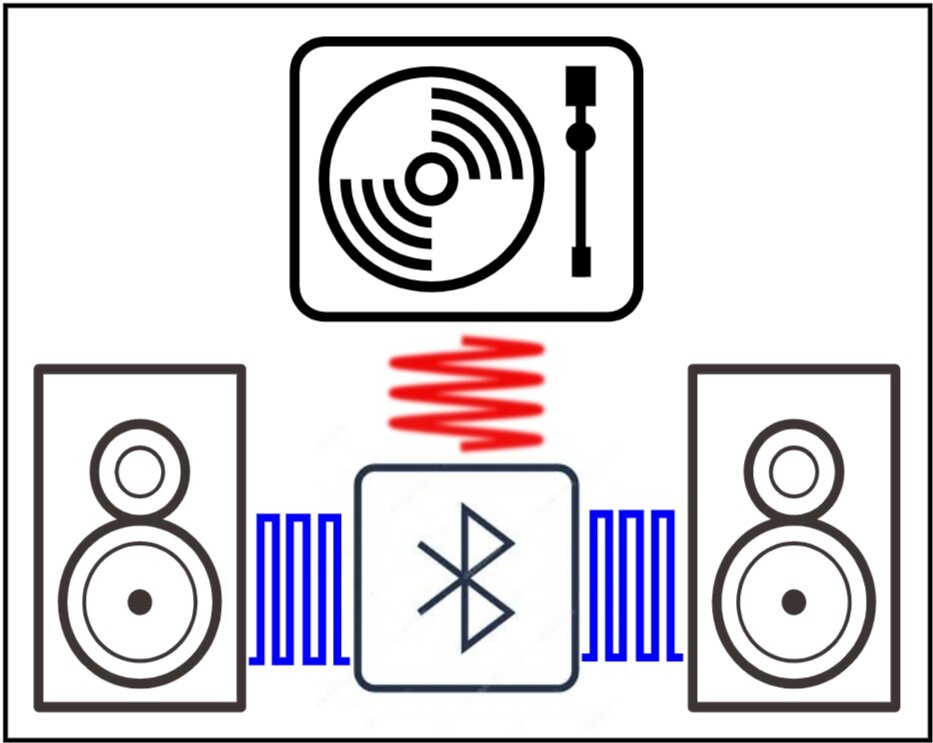
A brilliant plan… But will it work?
Wait, how can you get analog sound if you convert the signal to digital?
This didn’t make sense to us either, but our experts informed us that the sound of vinyl has much more to do with the source than the transmission of source to speakers. “When people talk about the warmth of vinyl, the vast majority are talking about records that were recorded [in analog],” explains Robinson. “The other thing that gives warmth is the cartridge,” Robinson adds. “If you have a cartridge that brings out warmth, that will come through over Bluetooth as well.”
As far as our simple, liberal-arts-degree brains can comprehend it, analog and digital have different sonic profiles based on how they represent sound on a recording. Analog and digital can also produce different sonic profiles based on how they translate a recording to an electrical signal for transmission to your speakers - ie a needle scraping along the grooves of a record vs a laser reading 1s and 0s off a CD. (Robinson has found, though, that the difference between analog and digital playback becomes small to nonexistent with higher-end equipment). However, once the sound becomes an electrical signal, encoding the signal digitally doesn’t change the sound much.
Ok, if the digital conversion doesn’t destroy the sound, why does wireless have an impact?
“The problem is bandwidth limitations,” says Buratto of Klipsch. Even high-bandwidth wireless technologies like WiFi can’t match the data throughput of wired connections. As a result, audio information needs to be compressed when it is encoded for wireless transmission, even over WiFi. Sound quality can suffer if information is lost in the compression process, and most audio codecs (the software that does the encoding and compression) are ‘lossy,’ meaning that they omit information in order to ensure a high rate of transmission over limited bandwidth. The lower the bandwidth, the more compression is needed, and the more audio quality can suffer.
“We are still several years away from wireless technology matching wired connections,” says Buratto, of Klipsch. “Even on high end wireless systems [like Sonos and Bluesound], there is still some degradation, though not everybody will be able to hear it.” As codecs improve, though, the degradation will get less and less perceptible, he thinks.
Uh, something about bandwidth and codecs…, what does that mean for me?
Basically, with high-end wireless speaker systems that use WiFi, any loss of audio quality will be small or imperceptible. They transmit with higher-bandwidth signals and use more sophisticated compression in their codecs. Bluetooth connections are much more likely to degrade your sound quality. Bluetooth has much lower bandwidth and, generally, compression technology isn’t sophisticated enough to compensate, unless you are willing to spend really big. “You can’t take an analog signal, compress it to a low bit rate, transmit it, and have it not deteriorate to some degree. And that’s what Bluetooth does,” says Hazelwood, of Andover Audio.
So, do I want wireless?
Again, this depends on you, your budget, and what you value. Wireless is really flexible and convenient. But if you want wireless that sounds as good (or nearly as good) as wired, it will cost you. A pair of Sonos Fives will run you $1000, and lower-price Sonos speakers will need a separate $500 base station to work with your turntable.
If you want a record player that sounds as good over Bluetooth as wired, you will need to up your budget even more. Andrew Robinson found that the Bluetooth connection on the $1700 Cambridge Audio Alva TT sonically indistinguishable from the wired connection. But our experts were generally less enthusiastic about the sound quality of other Bluetooth turntables. “We find that Bluetooth tends to be very noisy with turntables. Lots of excess background hum and buzz.” according to Ben Carter, co-founder of U-Turn Audio. That doesn’t mean you shouldn’t get a Bluetooth turntable. It just means that you should value the wireless more than the trade-off in sound quality if you do buy a Bluetooth turntable.
Ok, I’m going minimal, what should I get?
Turntables: Audio-Technica, Music Hall, and Denon each offer a full-line of turntables that include built-in phono preamps, ranging in price from $100-$1000. Some of those models feature Bluetooth as well. Pro-Ject’s turntables start a bit higher, at around $350, but are favorites of many reviewers. We are big fans of U-Turn because of their minimalist design, US manufacturing, and relatively low price (a U-Turn Orbit with a built-in preamp starts at $250).
Powered Speakers: Powered speakers for the minimal systems we have described can run you anywhere from $130 to well north of $1000, depending on the make, model, and available features.

Stylish speakers from Jamo
Speakers WITHOUT a built-in phono preamp: Edifier, Fluance, and Jamo offer great sound at the bottom of the pricepoint for the category ($130-$350 per pair). All of these speakers offer Bluetooth and RCA inputs, but, again, none include a phono preamp. Edifier is the best budget option here, though we are partial to Jamo for their elegant design.
Speakers WITH a built-in preamp: if you want to make sure you can pair your speakers with any turntable (not just one with a built-in preamp), take a look at speakers from Kanto, Peachtree, or Klipsch. These options will run you between $330 for the most basic Kantos to $800 for the most advanced Klipsches.

A minimal system from Klipsch.
Wireless Options: while all of the speakers above can connect to your turntable, phone, or computer via Bluetooth, they all require you to connect the speakers to each other with speaker wire. If you want to eliminate that speaker wire, Audioengine offers wireless powered speakers for between $270 and $700. Note that the Audioengines do NOT include a built-in preamp.
WHAT ARE YOU LOOKING FOR FROM A MODERN SYSTEM? WOULD YOU GO MINIMAL? LET US KNOW.
What are you looking for from a modern system? Would you go minimal? Let us know.
Leave a comment
Comments will be approved before showing up.
Also in Blog: Deep Cuts
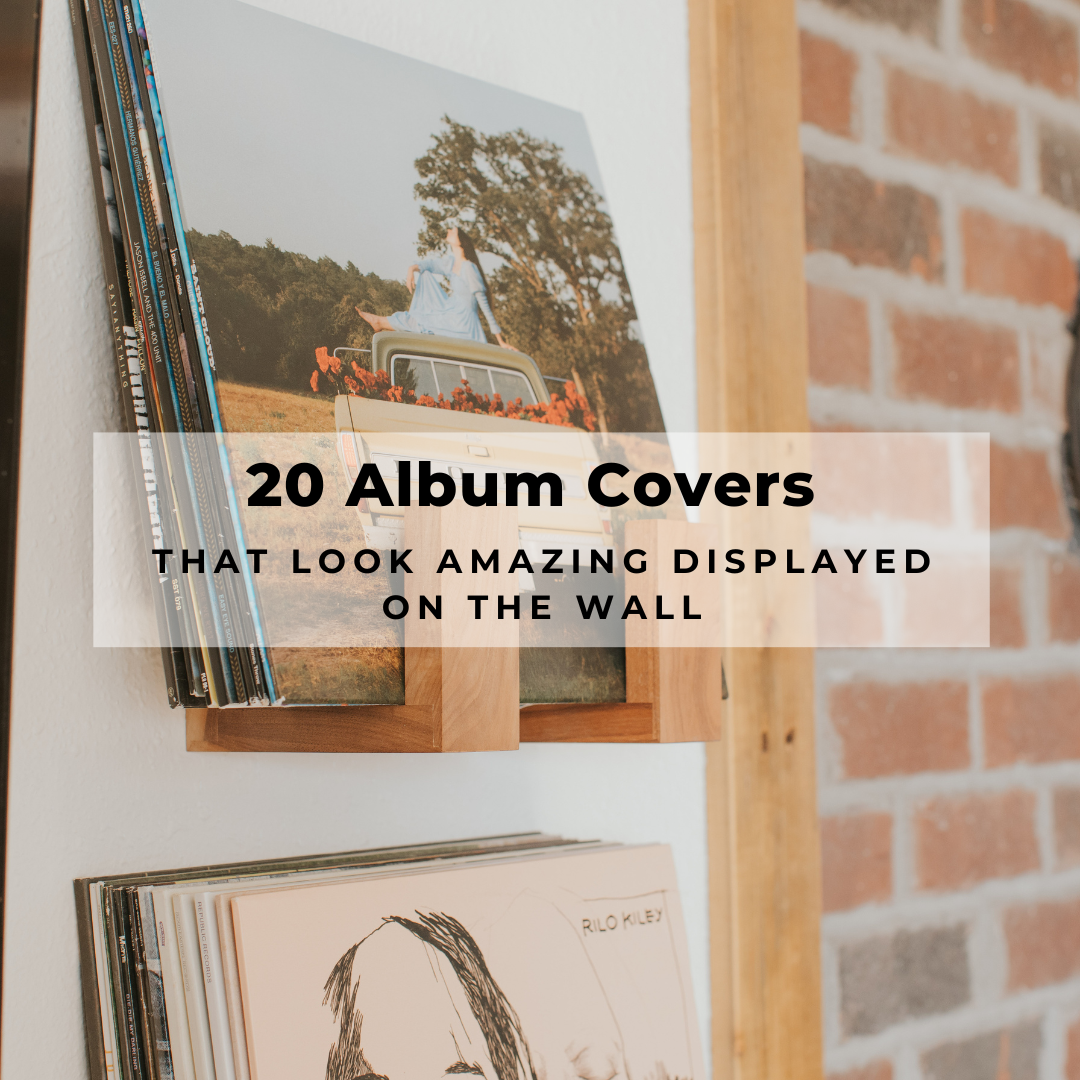
20 Album Covers Perfect For Displaying On The Wall
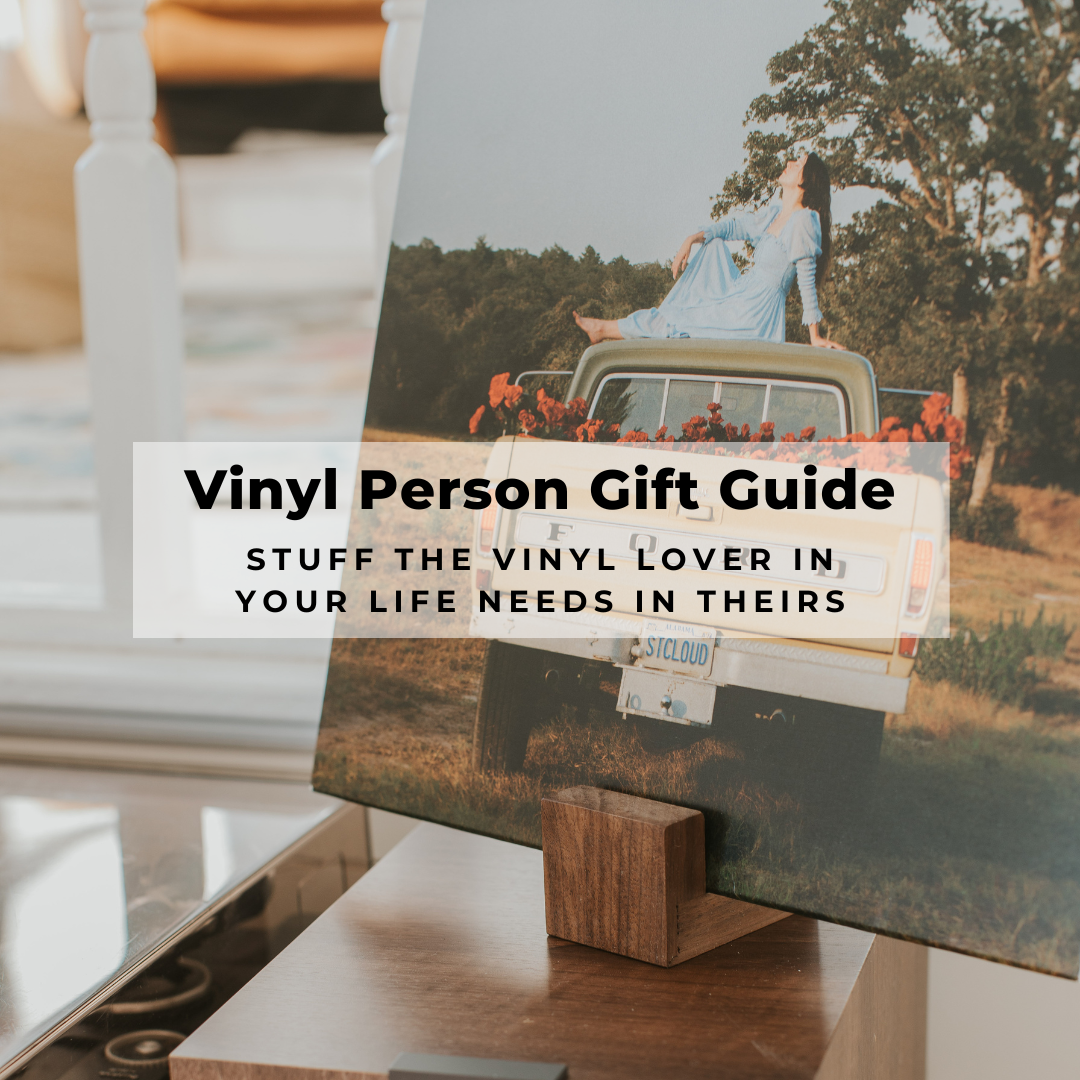
Our 2023 Vinyl Lovers Gift Guide
